|
 Dwight Peck's personal website Dwight Peck's personal website
Tuscany in the off-season
Arezzo and the neighborhood in February and early March, 2015
You may not find this terribly rewarding unless you're included here, so this is a good time for casual and random browsers to turn back before they get too caught up in the sweep and majesty of the proceedings and can't let go.
Arezzo was at the top of our list when we based ourselves in Lucca a few months ago, but we never made it this far south. So here we are now, based in Arezzo this time, with lots to see roundabout.
Castiglione del Lago on Lake Trasimeno

As we promised ourselves, we're back in Castiglione del Lago, the 'lago' being Lake Trasimeno, the next day, 4 March 2015, and we've just rolled in through the Porta Perugina, built in 1325 as part of the city walls, which still ring the old town roundabout.

That's the Palazzo della Corgna (or Palazzo Ducale), a royal-ish sort of palace built in 1563 for the mercenary chieftain Ascanio della Corgna to live in and to celebrate his wonderful achievements with wall-to-wall frescoes of his exploits throughout. It's now a museum and the town library.

That's the Rocca del Leone or Fortress of the Lion, which we will inspect minutely in a little while, after we . . .
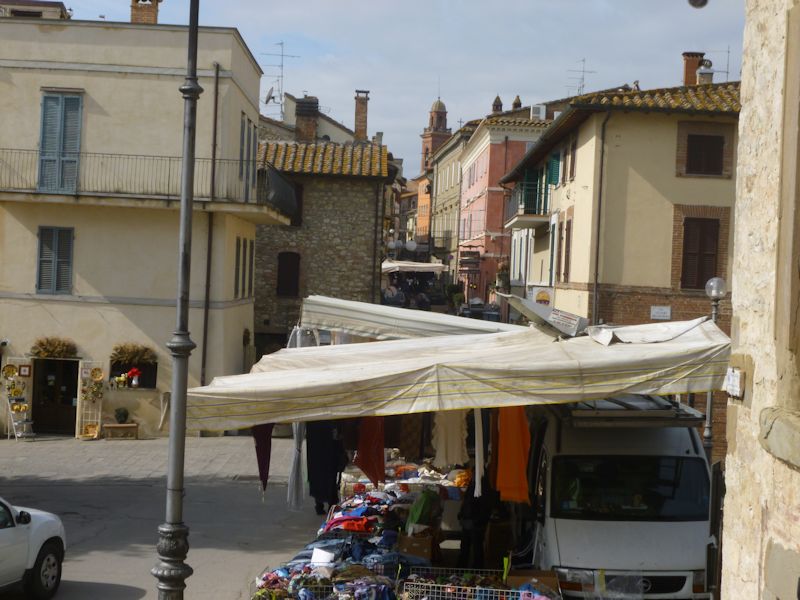
. . . go shopping. The Via Vittorio Emanuele is the High Street of the medieval hilltop historic centre, and today's market day.

From inside the Palazzo (buying tickets to the fortress), that's the fruit and vegetables market in the carpark and garden named for Antonio Gramsci, the Marxist theoretician.
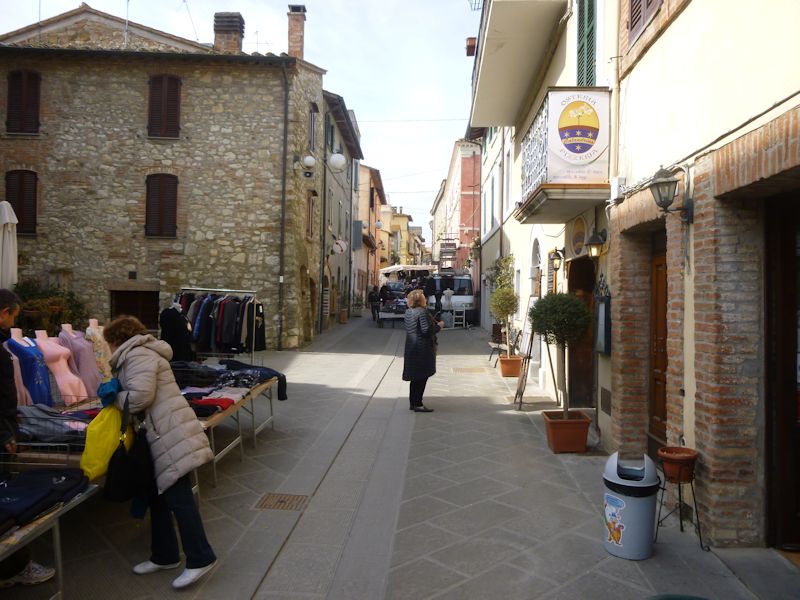
The whole hilltop old town within the walls is an elongated oval, with the High Street extending from the Palazzo to the western gate the same distance as the fortress does in the other direction.
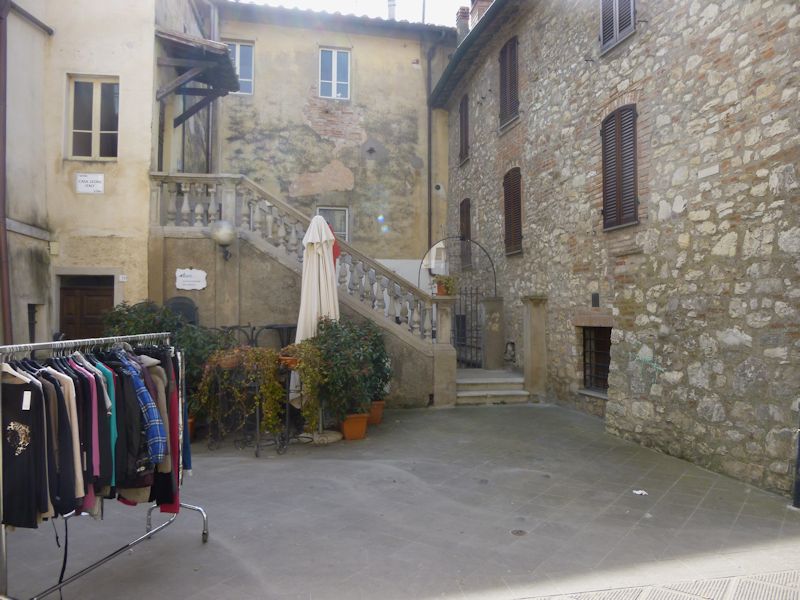
Castiglione these days is a healthy city of about 15,000 inhabitants, mostly spread out down below around the walled hilltop old town, part of the Province of Perugia in Umbria a bit more than 50km south of Arezzo in Tuscany and 60km north of Orvieto.

The city here, in Etruscan as well as Roman and medieval times, was always strategically important because of its central location along that north-south corridor and its commanding position on the lake -- it was hotly contested frequently, and increasingly depopulated over time. Not much seems to be known about its particular ups and downs until the 13th century. The area along this side of the lake, called Chiugi, was given by the Emperor Otto III to the monastery of Campoleone in 997, which improved infrastructure and swamp reclamation and started bringing people back.

In 1184, however, the Benedictine abbot of Campoleone gave the town to the city of Perugia. Subsequently, extending his imperial ambitions into central and northern Italy, Frederick II ('Stupor Mundi') took Castiglione under his wing and built the Fortress of the Lion on the promontory overlooking the lake, as part of his feuds with the popes, in 1248. But when Frederick died in 1250, Perugia took the town back and set about resettling the disused land and trying to make the area more prosperous, and profitable, again.
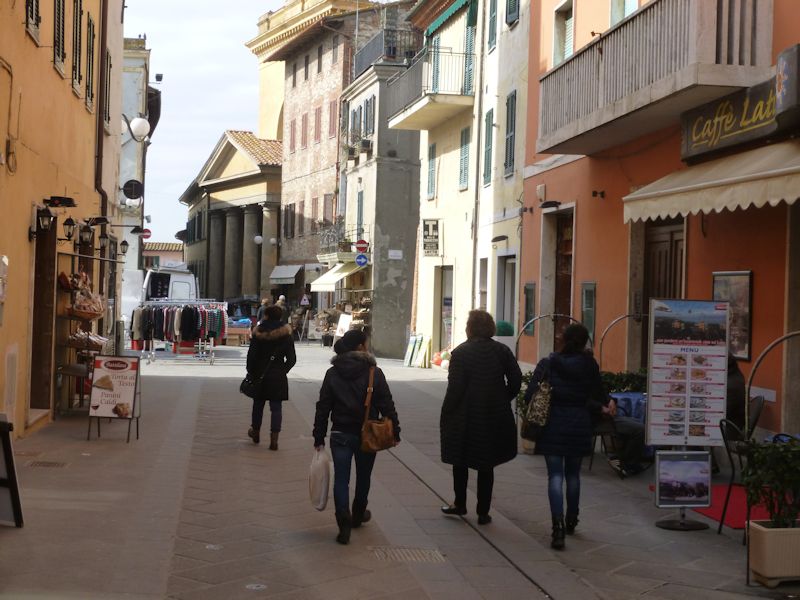
In 1424, the papal troops finally bested Perugia and gained feudal possession of the Chiugi region, but resettlement did not take off until ways were found in the 16th century to control water levels in the lake to prevent frequent flooding and to convert the perennial swamps into fertile farm land.

In 1550, however, the very family-oriented Pope Julius III decided to give Castiglione to his sister Giacoma, and in 1563 her son Ascanio della Corgna, the adventurous warlord, was named Marquis of Castiglione and Chiugi (the surrounding western side of the lake) by the next pope.
(The adjacent area of the Chiugi, Pozzuolo, had been gifted by the predecessor Pope, Paul III, to his daughter Costanza in 1544. The heyday of papal hijinks, or one of them. Another part of the Chiugi, Petrignano, was bestowed upon Cortona's Cardinal Passerini in 1514, whose descendants owned it as a papal fief until the late 18th century.)

Keeping a vigilant guard over the bread sticks and bags of polenta
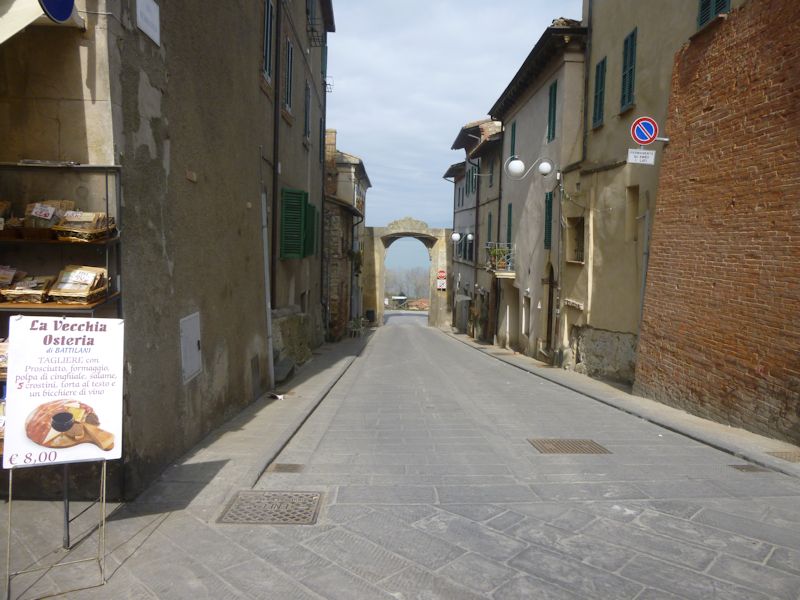
The 16th century gate of Fiorentina, one of the town's three gates in the city walls.

The Palazzo del Popolo ("medieval building greatly tampered with")

-- That stuffed boar would go real well in our salon.

The Elementary School of Pasta, yum
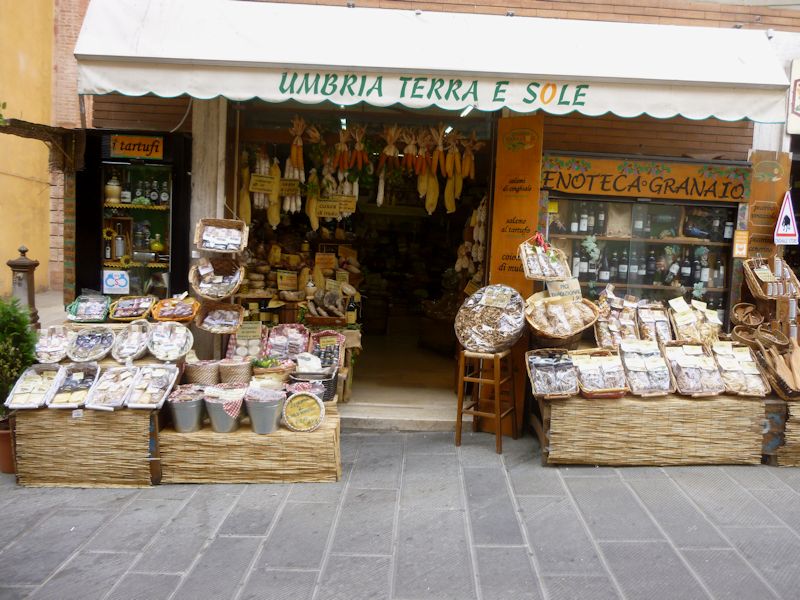
-- Get thee behind me, Satan (for thou savourest not the things that be of God, but those that be of Umbrian sausage makers).
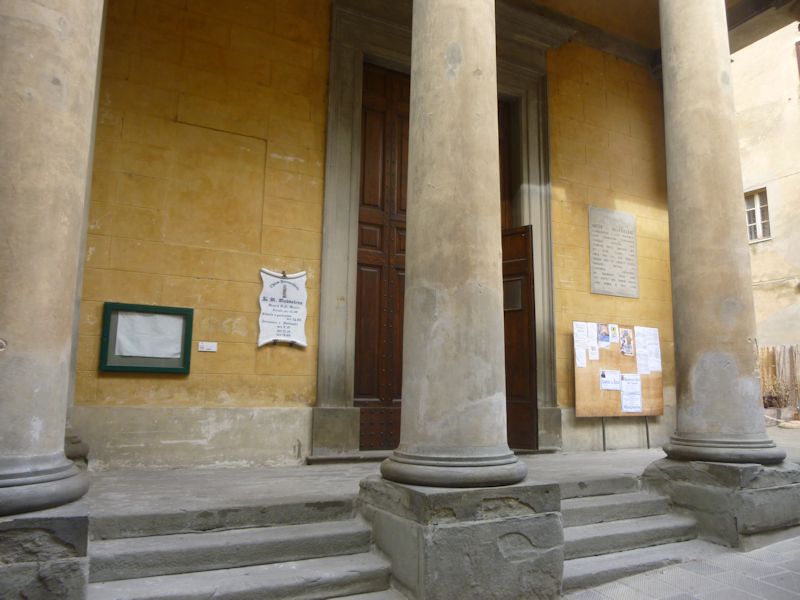
The Chiesa Parrocchiale of St Mary Magdalene (built in 1836 after somebody decided to demolish the medieval church).
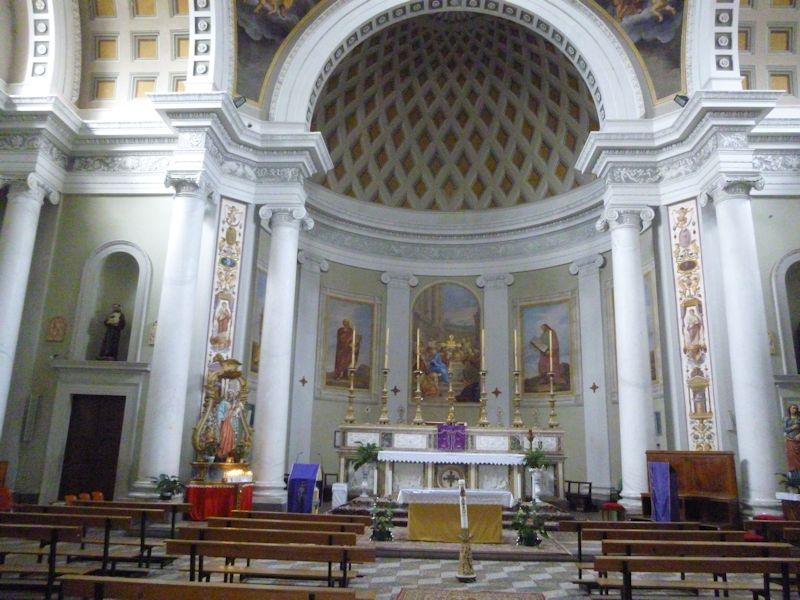
The altar with a neoclassical look

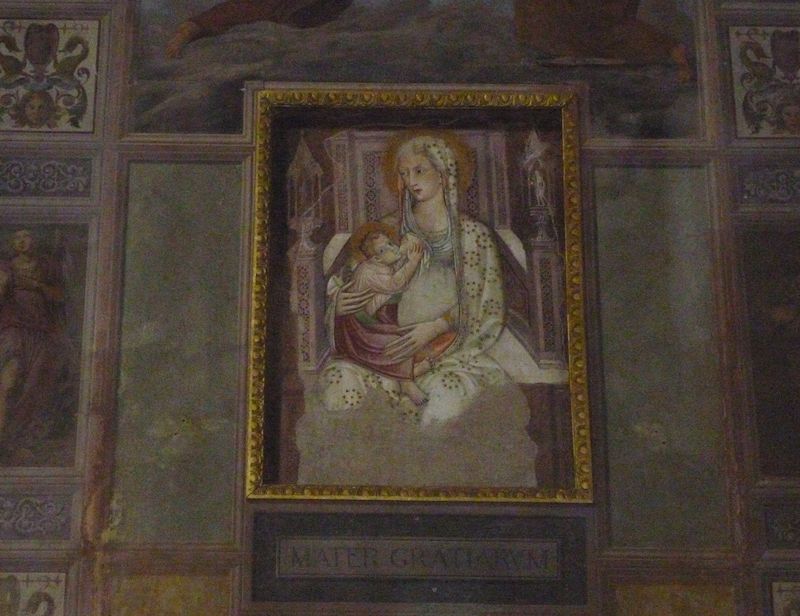
One work of note in the church: Madonna of the milk, 14th century, by the 'Sienese school'
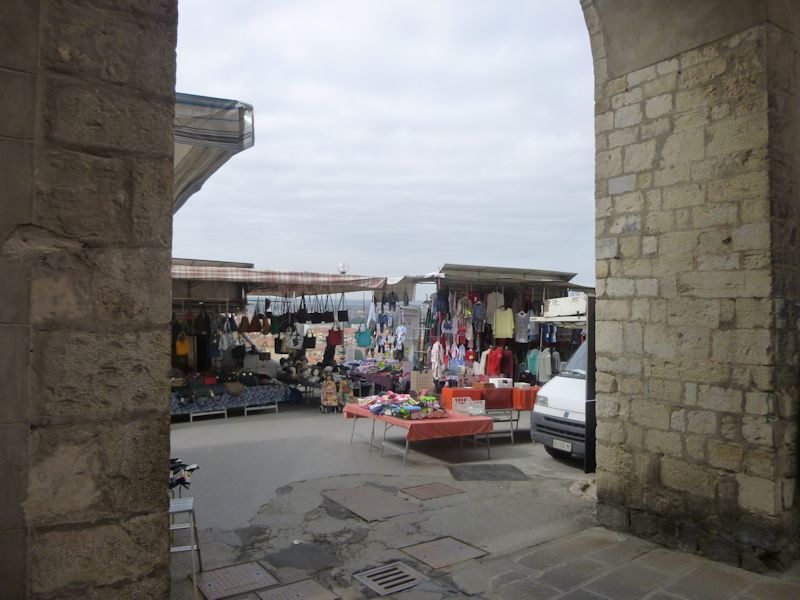
We're looking for Kristin -- out the Porta Senese at the western end of town, and the market-day fun continues.

Modern Castiglione del Lago urban-sprawling out onto the plain
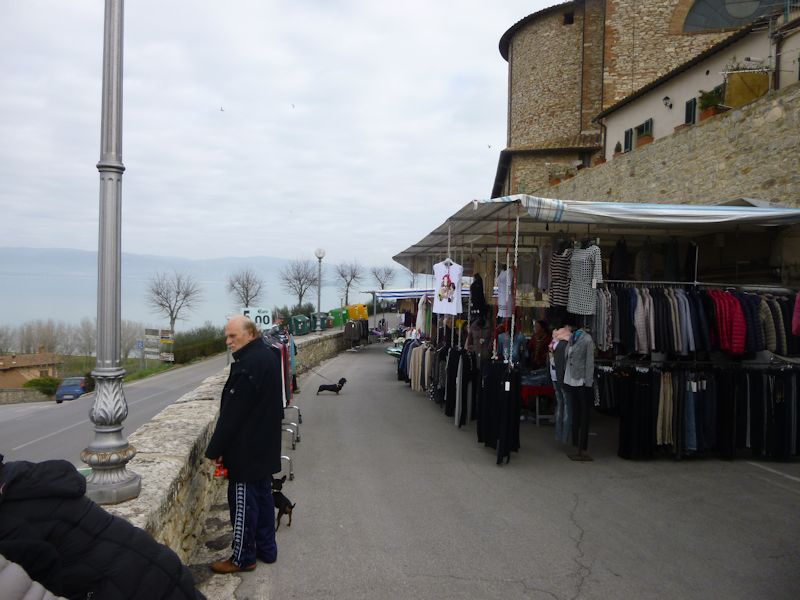
Brisk market-day buying and selling under the back of the church, overlooking the lake

These are the city walls, which go all the way round, built in the 13th century at the same time as the Fortress by Brother Elias of Cortona, St Francis of Assisi's right-hand man.

An alley leading from the High Street to other one
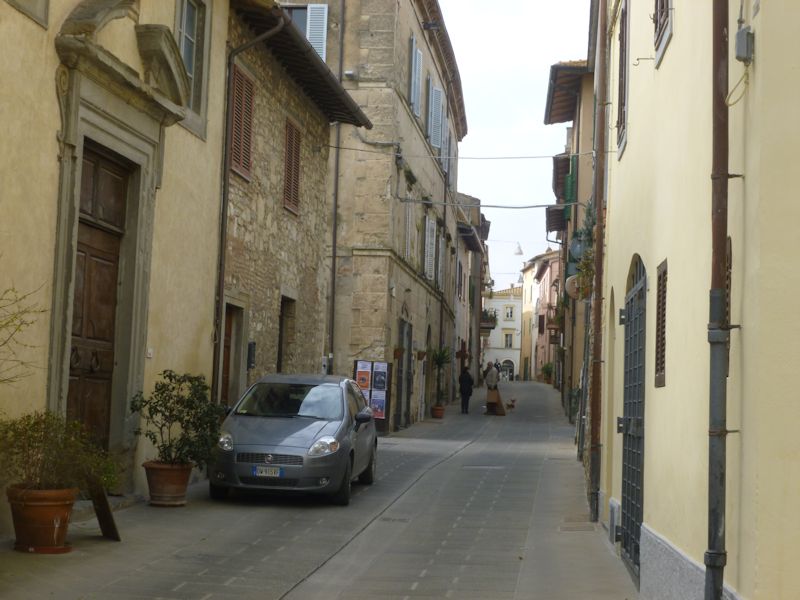
This is not the High Street. This is the other one.

Back to the Palazzo della Corgna, equidistant between the town on the left and the fortress to the right. The Corgna museum is upstairs, and the town library, city offices, and museum services are on the ground floor.
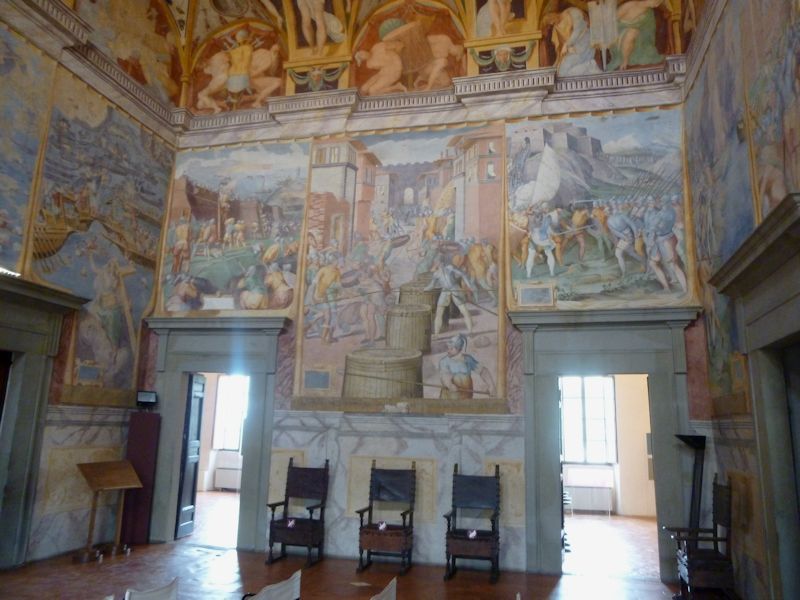
The Palazzo was built between 1550 and 1563 on the orders of the mercenary commander Ascanio della Corgna, a nephew of Pope Julius III who as a young man got thrown out of Rome because of his crazy violence and traveled off as a professional soldier (against Lutherans in Germany and Turks in Malta, and in numerous Italian inter-city wars, getting his eye popped out at the siege of Casale Monferrato), becoming well-known for his foolhardy approach to warfare. All memorialized here by the goodman's fresco painters.

On the positive side, he fought with the Spanish relief of the Great Siege of Malta in 1565 and the Spanish defeat of the Turkish fleet at Lepanto in 1571, and on the not so positive side, he was most famous for his public duel in 1546 against an insubordinate officer Giovanni Taddei near Bologna, advertised in advance and attended by thousands of spectators. That's pictured above ("conducted with full and half-length swords and an armored forearm") in one of the palace's rooms dedicated to flattering fresco views of his amazing exploits.

More views of Ascanio's impressive victories, no expenses spared. Other rooms of the piano nobile are dedicated to frescoes with mythological and biblical themes . . .

. . . as well as a room devoted to Hannibal's victory over the Romans at the Battle of Trasimene in 217 BC, from which Ascanio claimed he had gained his lifelong inspiration.
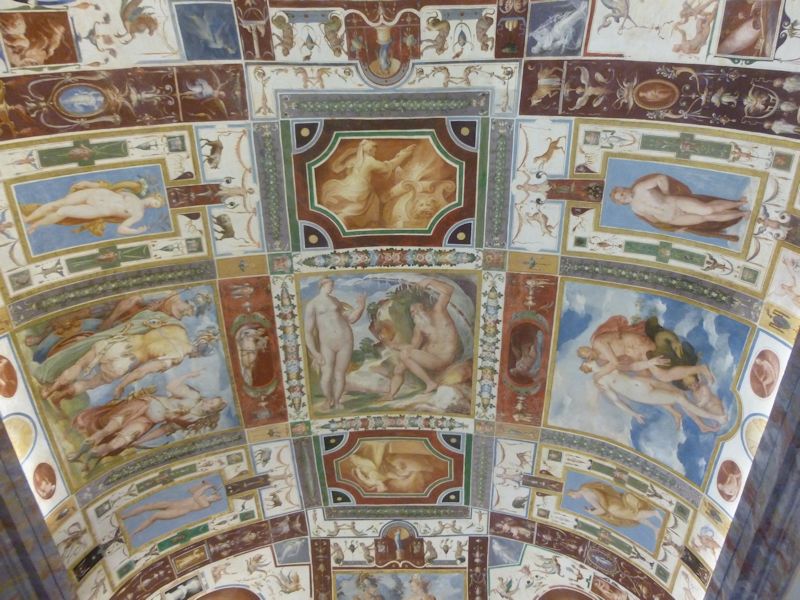
Lots of roomsful of nudies, too.

These are just mannequins, no worries, representing members of Ascanio's family (the fellow in the red hat is meant to represent his brother Cardinal Fulvio della Corgna). The great man himself, however, had no children, and his nephew Diomede inherited and became a Duke in 1617, but the line died out in 1647 and everything reverted to the Pope. Of course. But a local tourist guide (by kmZero) says that that period of relative independence 1563 to 1647 (though under papal suzerainty) "was a rather prosperous one with an administration mindful of the development of the area" (adding "financed by high taxes, however").

The half of the upper town that's between the Renaissance palazzo and the fortress comprised an elaborate walled garden, now missing. Presently, the covered passageway above the city wall connecting the castle and the palace (in case a hasty exit might have been required from one or the other) now serves as the tourist entrance to the castle.
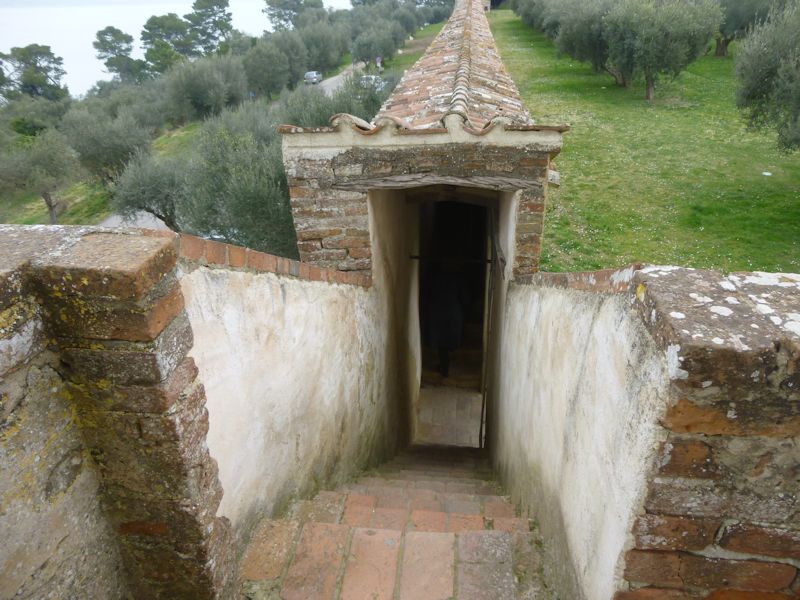
So here we go. Duck your head, and get skinny. (This was once a "secret door" from the palace.)

At 170 metres long, it would have been a dangerous "escape route" to get caught in. But it's a lot shorter than the 800m "Passetto di Borgo" between Vatican City and the Castel Sant'Angelo, or the 1,000m Vasari Corridor from the Palazzo Vecchio to the Pitti Palace over the Arno.
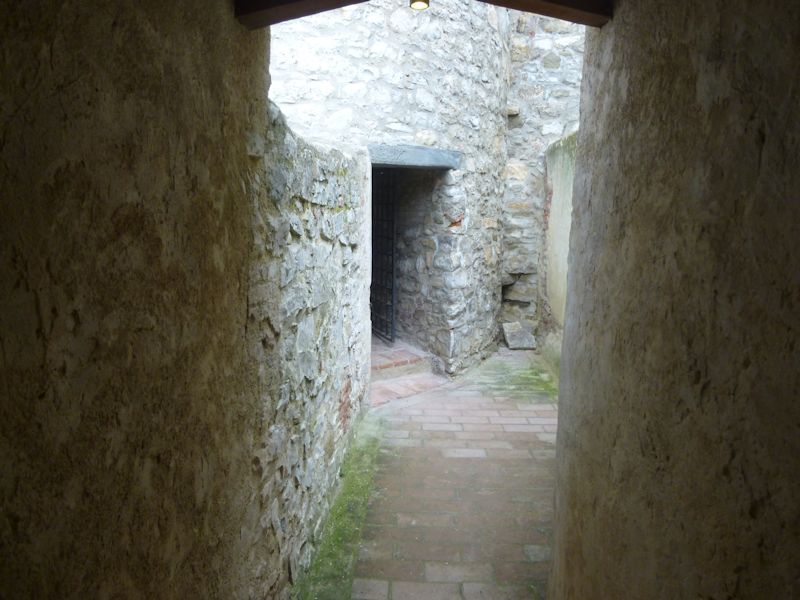
Daylight, at the foot of the round tower at the northern corner of the fortress.

Frederick II's Fortress of the Lion, or Rocca del Leone, built in 1248 to a design by Brother Elias of Cortona, who was formerly the Minister General of the Franciscan order (1232-1239) until he became so impressed by the 'Stupor Mundi' that he began serving the Emperor as a chief diplomat and advisor and rode as a cavalry leader in the imperial assaults on Faena, Ravenna, and other pro-papal towns. Which got him excommunicated, naturally.
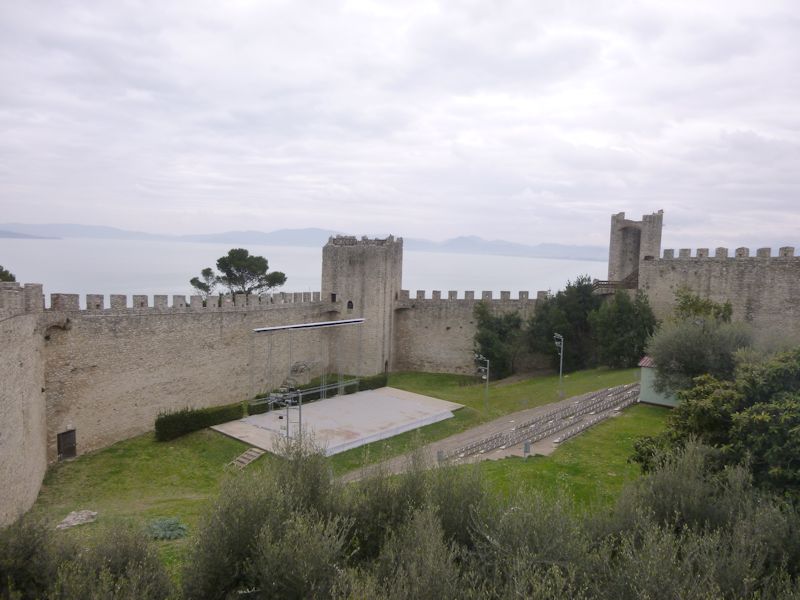
The fortress is built on an irregular pentagonal plan on a height overlooking the lake and was intended, not only to protect the town but also to control the traffic on the lake. According to Wikipedia, it has withstood a number of sieges over the centuries, but no details are supplied there.

From the top of the round tower, we commence the Wall Walk.
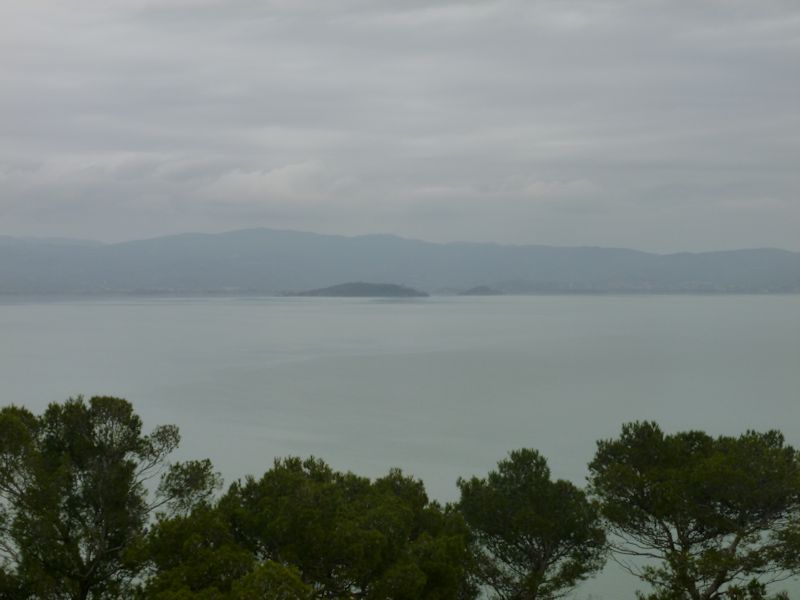
Along the northern shore of the lake, two of the lake's three islands, Isola Maggiore in the foreground, the only permanently inhabited island of the three, with a small village with a church with frescoes, a small museum, and a privately-owned restored castle, and behind that, the tiny Isola Minore, basically a cormorant colony.

Between the round north tower and the two eastward-facing towers. Two of the four towers were rebuilt as round towers in the 16th century to deflect cannonballs.
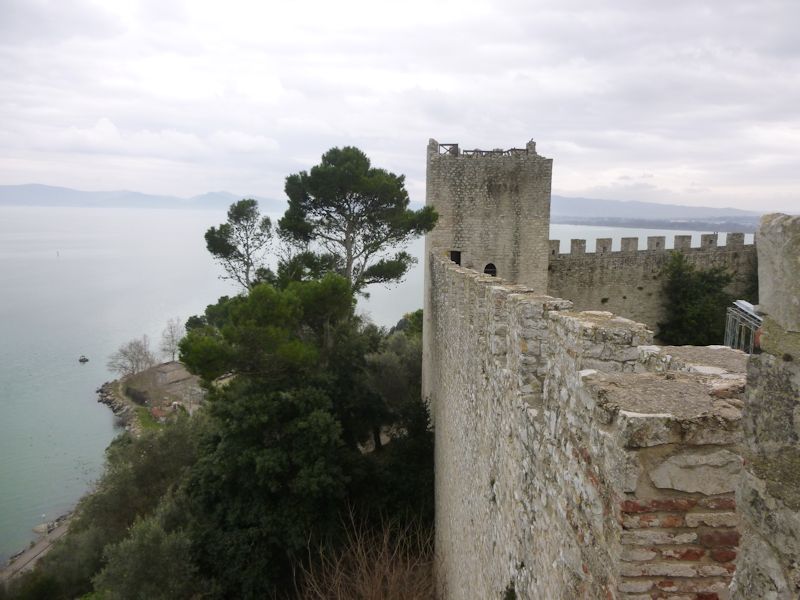
The square tower facing out over the lake, with part of the port facilities below.
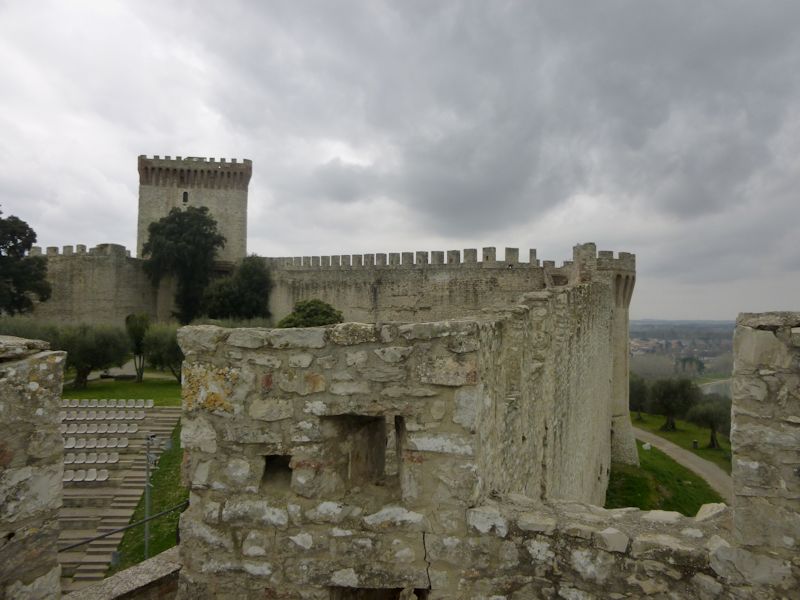
A view back from the second tower at the 30m-tall triangular keep or donjon on the town-side of the fortress facing the Corgna palazzo

The triangular keep, exceedingly ususual -- there's speculation that Brother Elias, whose enemies at the time accused him of being an alchemist and god knows what else, did in fact inspire his designs with the magical number 3 (a 3-sided keep, 3 gates to the city, 3 piazzas, 3 churches, 3 access roads).

Mind your head.

From the top of the large square tower, a look westward towards the second round tower and the castle keep
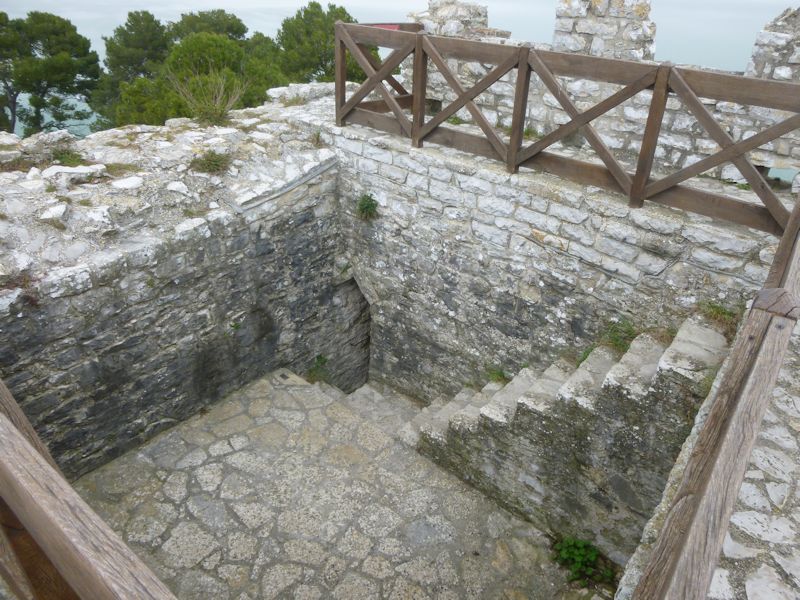
Oh man. These days, going up is much easier than going down.
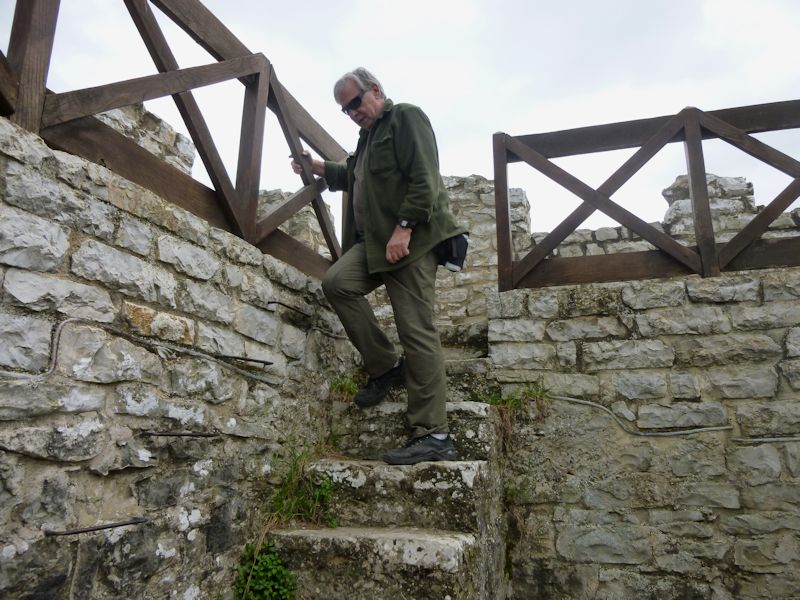
But luckily it's not impossible.
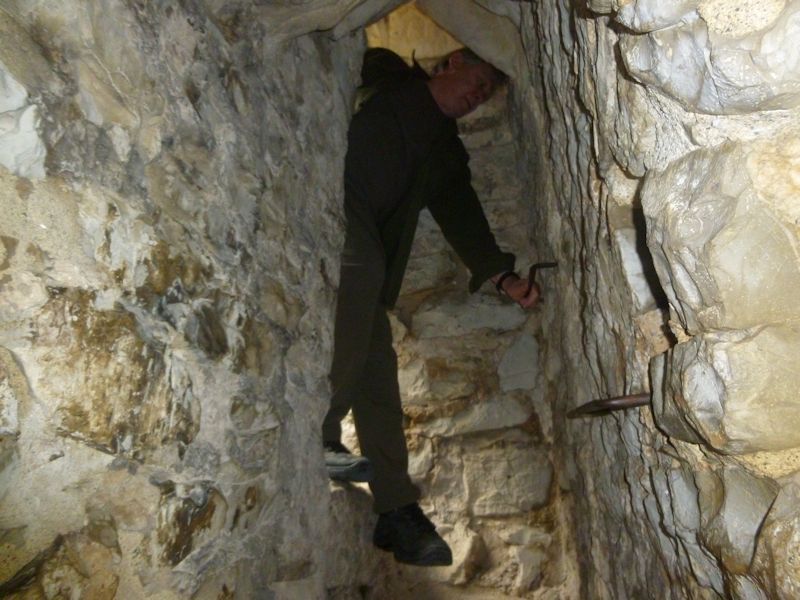
(No laughing.) And the garrison did this in full armor, waving pikes and halberds, etc.
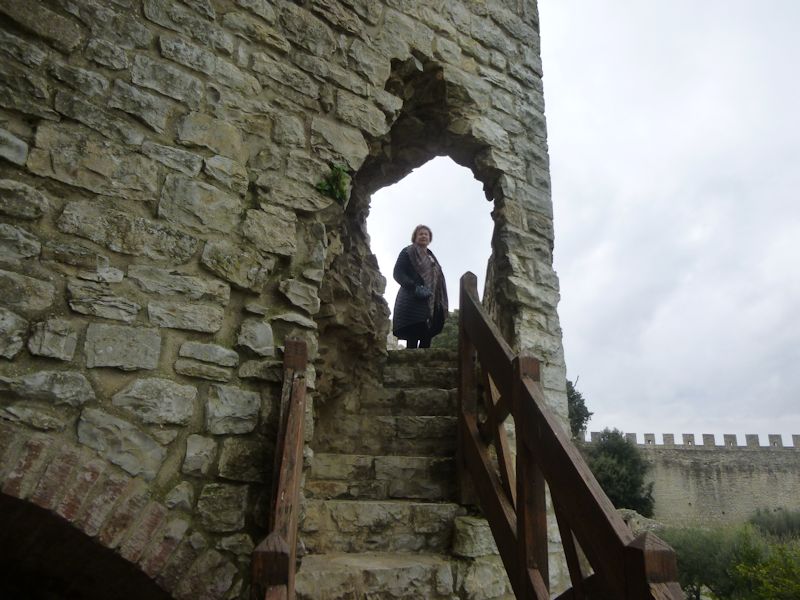
Awaiting stragglers

Mind your head again. The door to the castle keep.
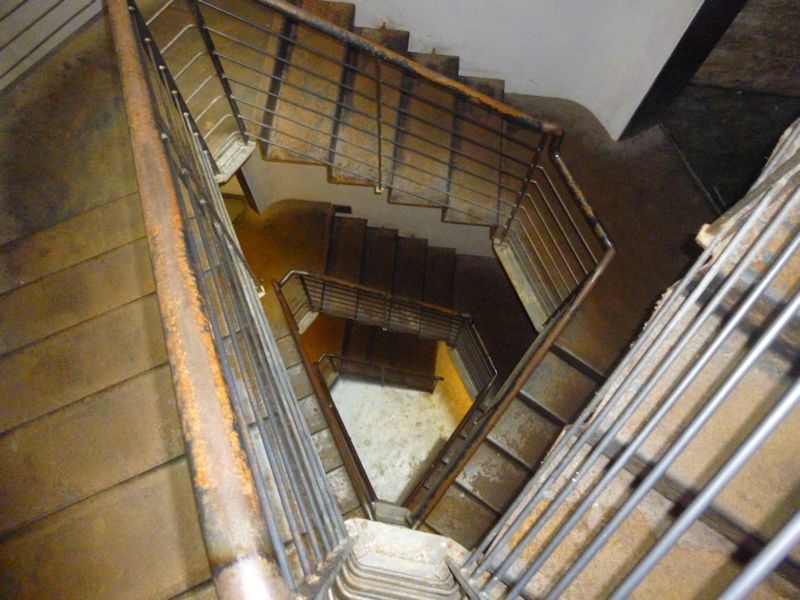
Triangular stairway
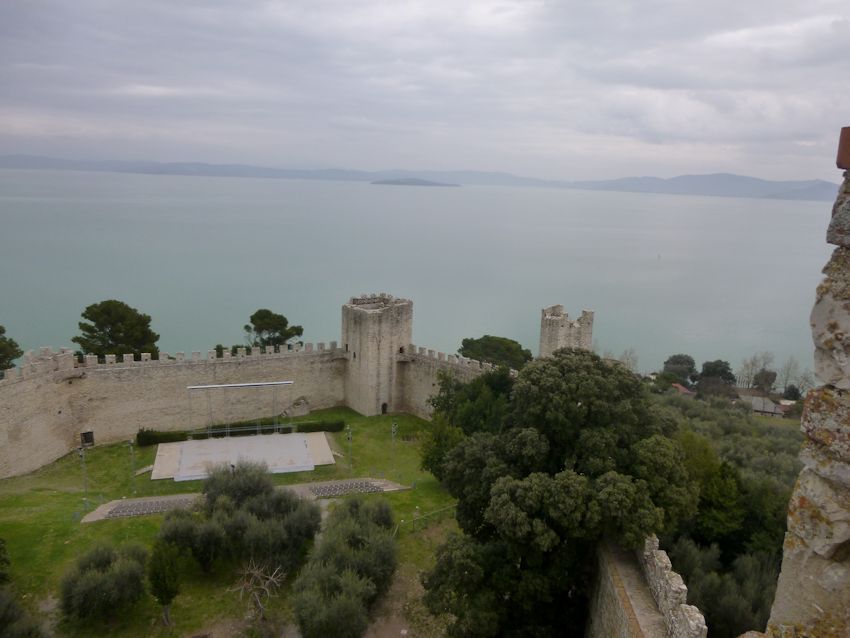
The lakeside view from the keep
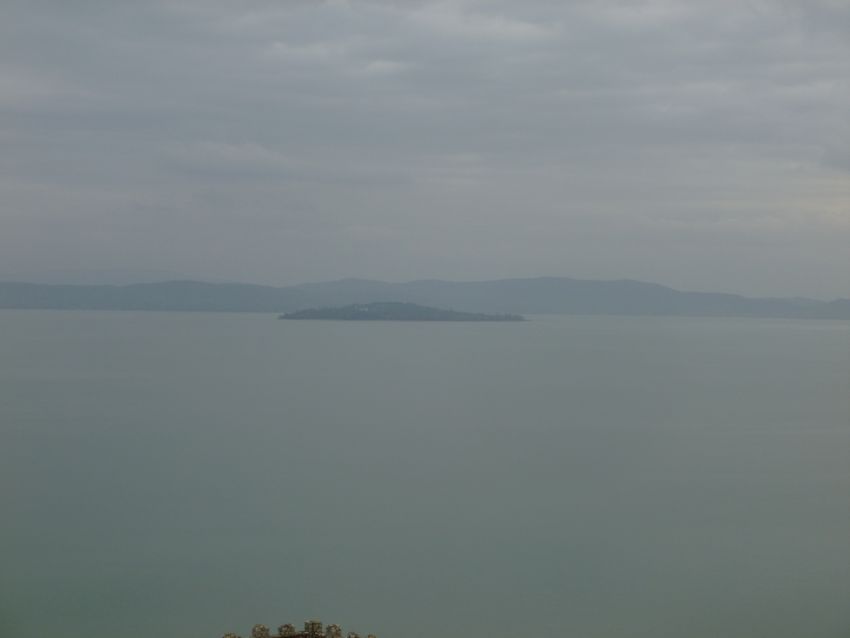
The third island, Isola Polvese, three times the size of the Isola Maggiore, but basically uninhabited except for a seasonal environmental educational park. Florentine troops destroyed everything on the island in the 17th century, and given the malarial issues until the 1950s, nobody ever bothered to come back.

The hilltop old town of Castiglione del Lago from the top of the fortress, with the Palazzo della Corgna in the foreground
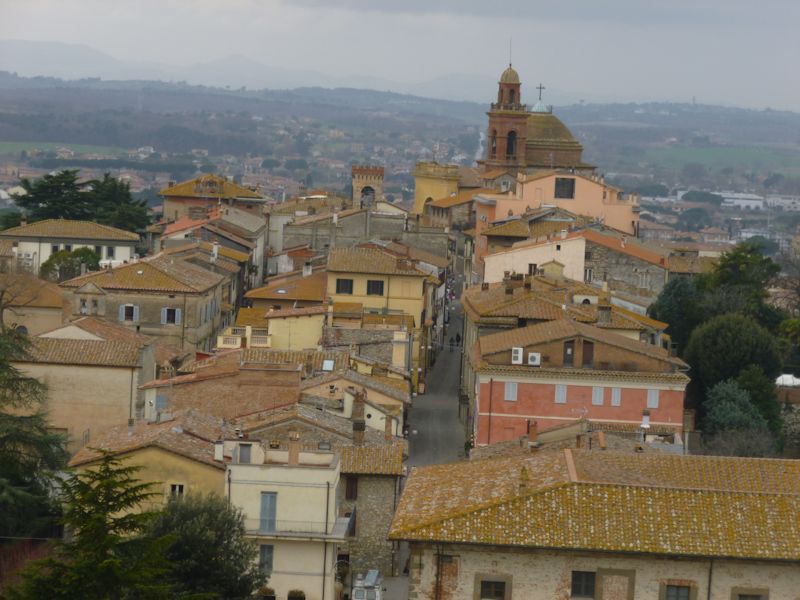
The high street of Castiglione, with the street market people nearly all cleared out now
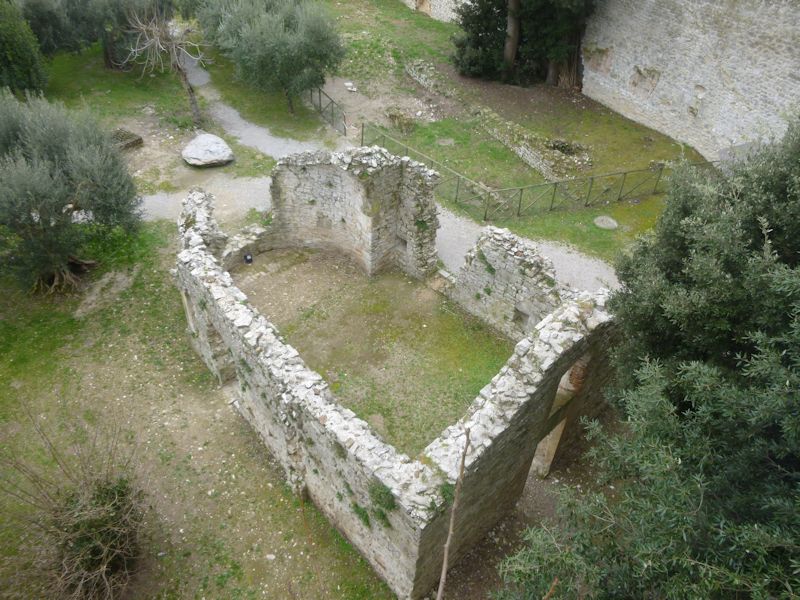
The ruins of a paleo-Christian church in the castle courtyard
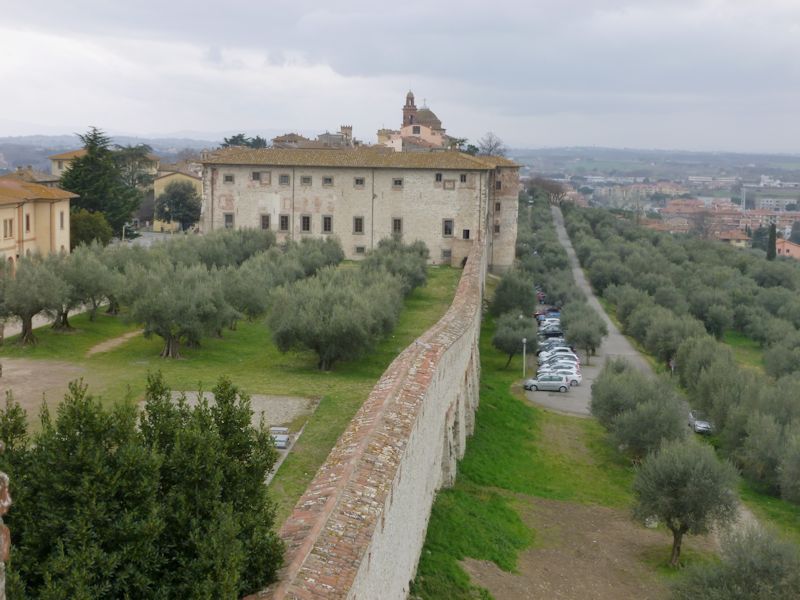
Time for the long trek back through the getaway passage
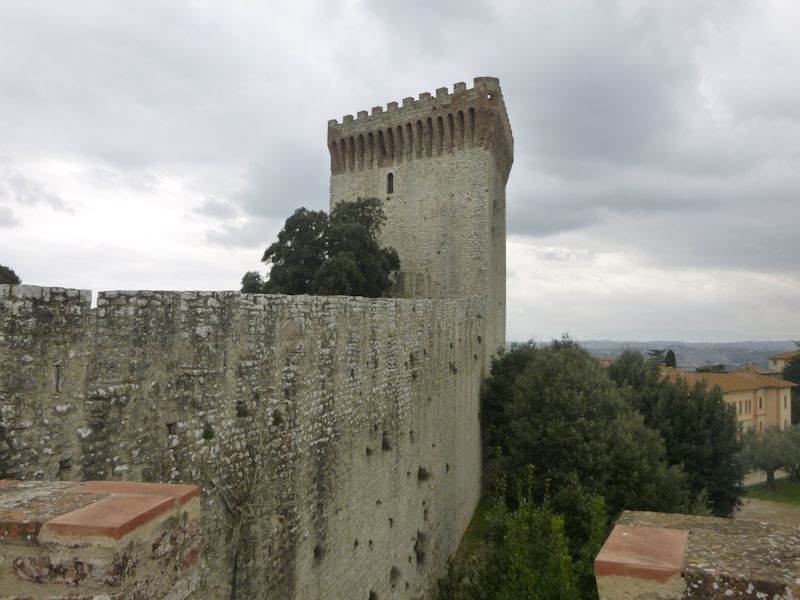
A last view of the strange triangular keep
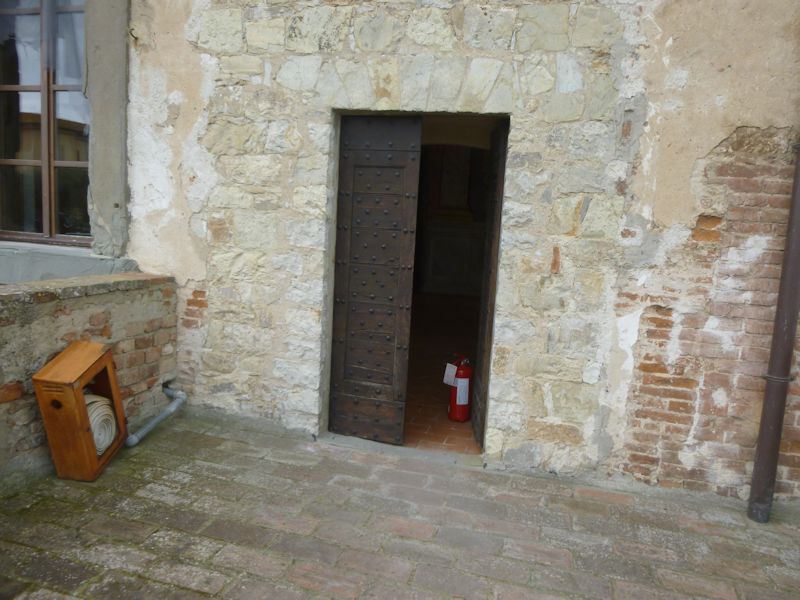
Back into the Palazzo della Corgna, and back on the road . . .
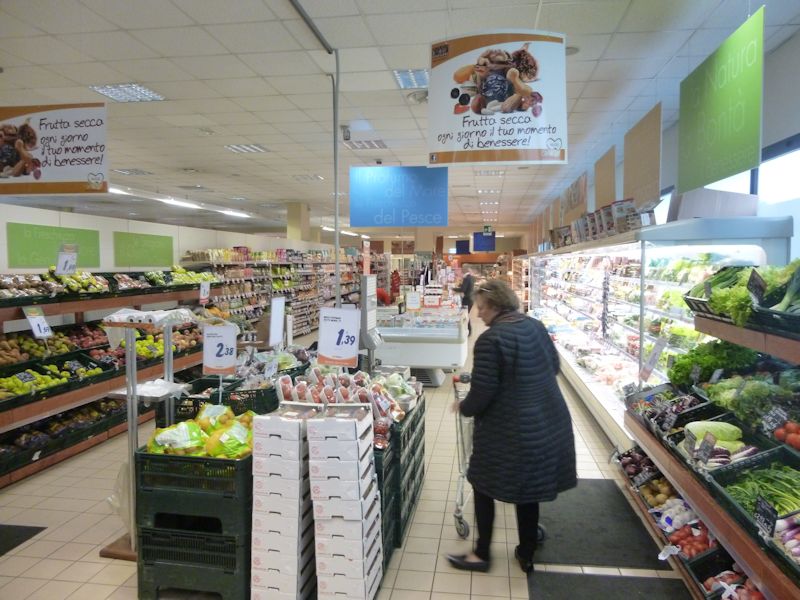
. . . picking up some snacks along the way.
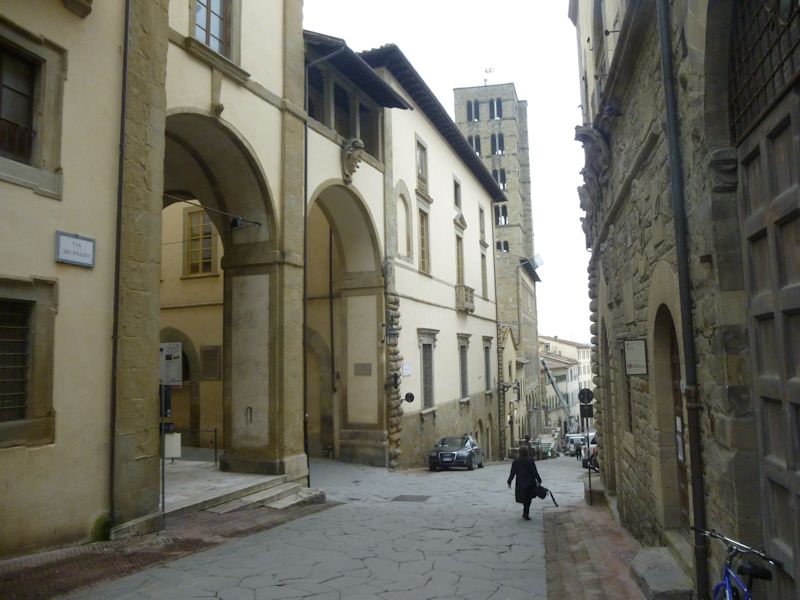
Arezzo, in good time

Back to our room in the B+B Corte del Re to dump the supermarket loot, and then . . .

. . . to round out the day with a visit to Giorgio Vasari's house in Arezzo. Vasari was born in Arezzo in 1511 and, with a recommendation by his cousin Luca Signorelli, went off to Florence with the support of Cardinal Passerini, where he was befriended by Michelangelo and made his name.
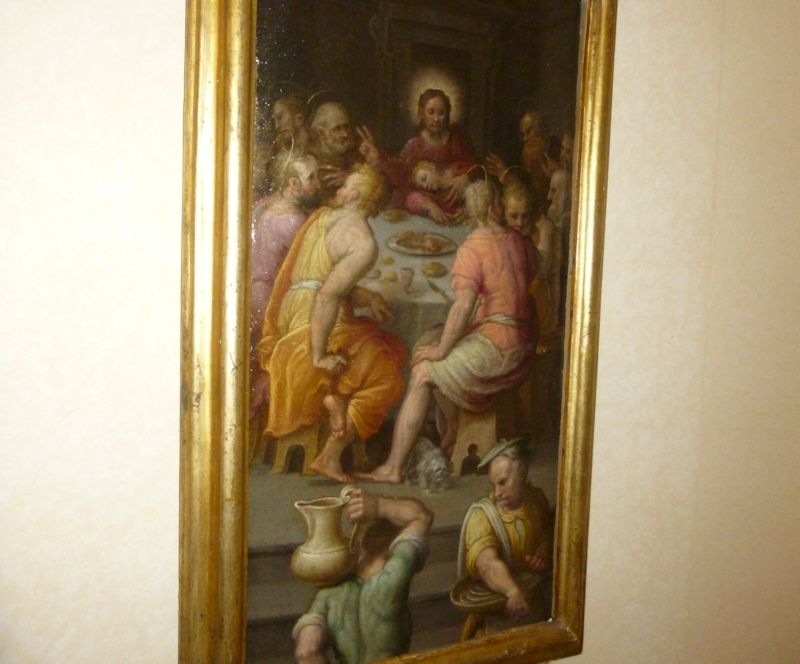
He bought this mini-palazzo family home in 1541 and revised it architecturally, and then set about decorating every inch of it with his own paintings and some by his friends, from 1542 to 1548. This is Vasari's Last Supper.

Vasari left soon after and, after working in Rome for a time, settled in Florence after 1554, but he continued adding artistic works to his house, lived here from time to time as a kind of second home, and was eventually buried in the family tomb in Arezzo in 1574.
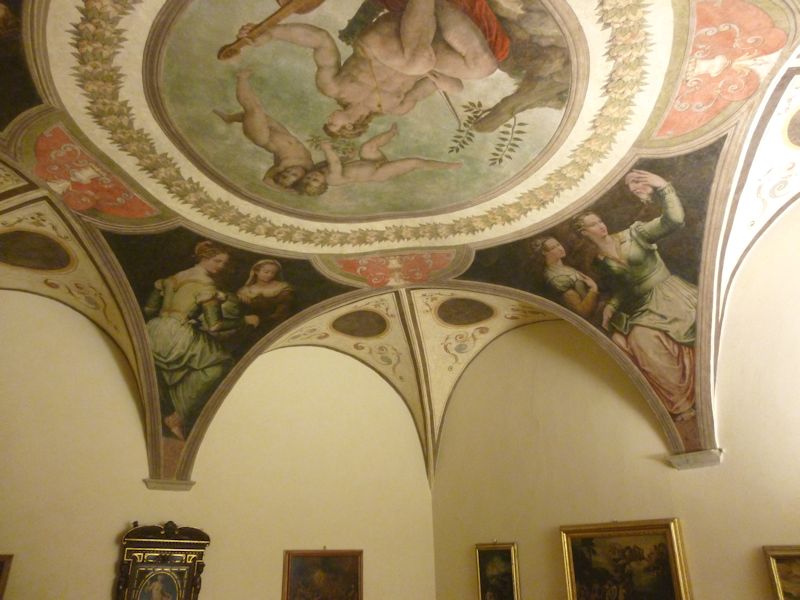
Various allegorical ladies
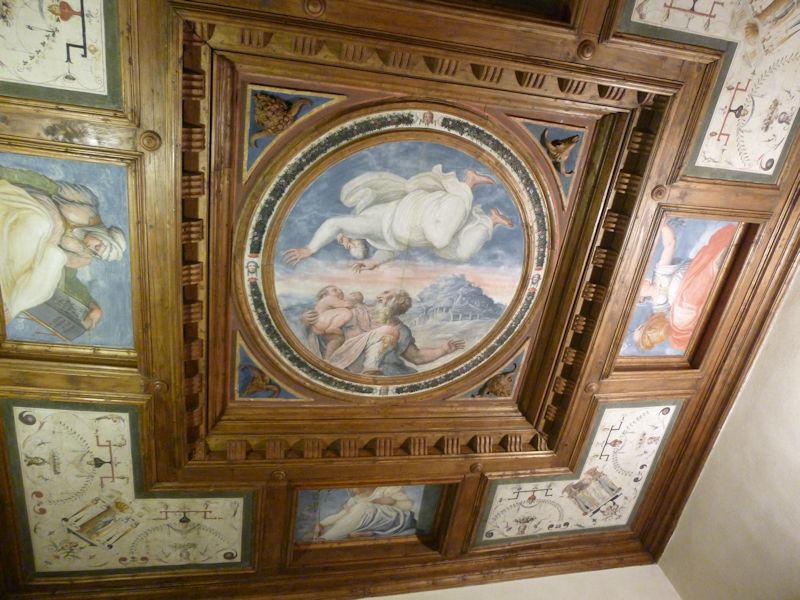
-- Look out below.

The Casa Vasari was bought by the city in 1911 and opened as a museum and Vasari archives in 1955.
Next: POPPI (where, in 1289, it all came down)
        
      

 Feedback
and suggestions are welcome if positive, resented if negative, Feedback
and suggestions are welcome if positive, resented if negative,  .
All rights reserved, all wrongs avenged. Posted 30 April 2015. .
All rights reserved, all wrongs avenged. Posted 30 April 2015.
|
 Dwight Peck's personal website
Dwight Peck's personal website





















































































